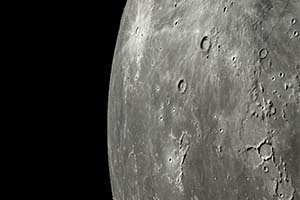
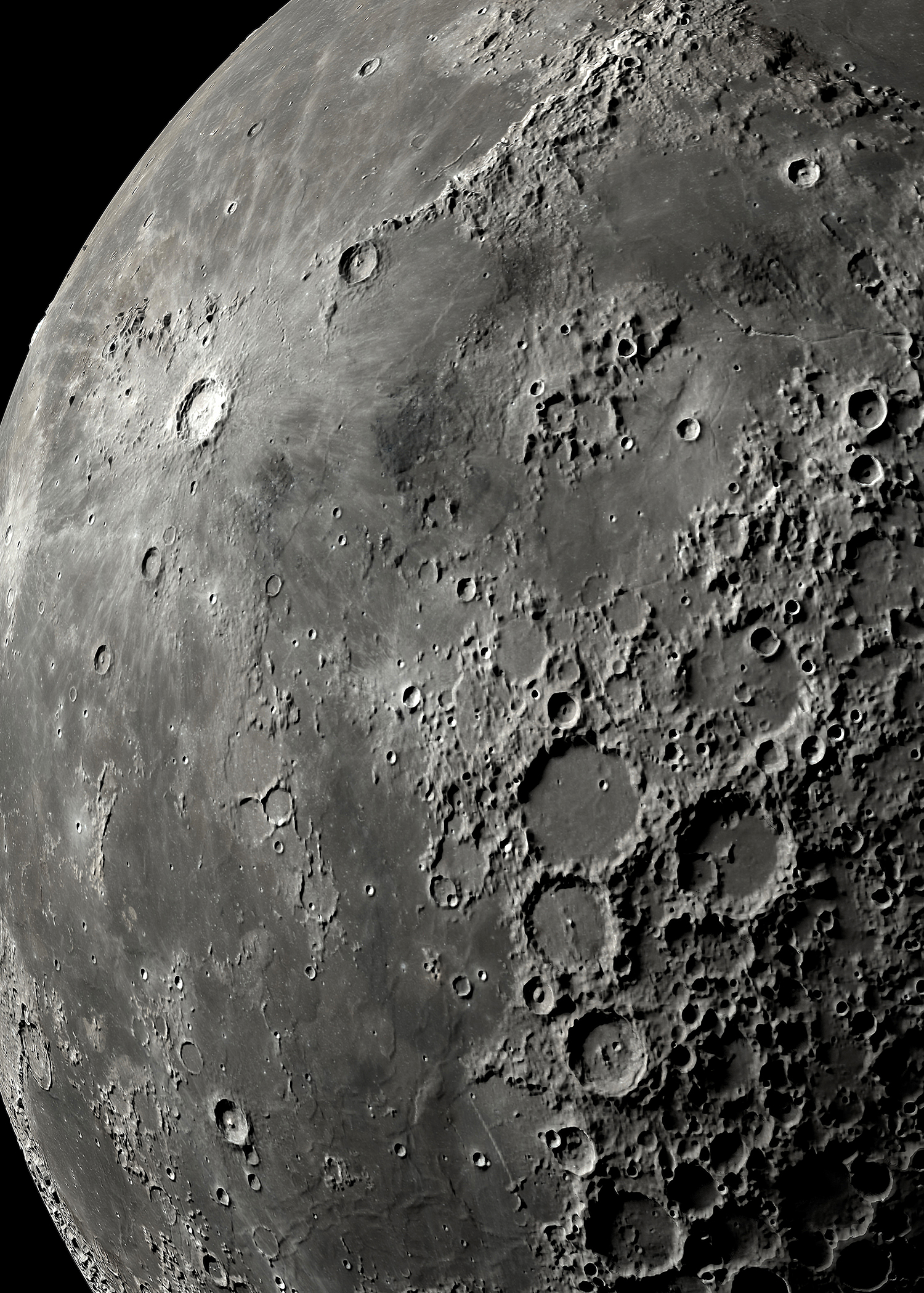
The Dark Side of the Moon
Is New Zealand lending support to an aggressive American push to commercialise outer space?
By Kate Evans
On 31 May New Zealand took one small step in the new space race. We signed the Artemis Accords, a set of agreements between the United States and a handful of other countries hoping to participate in a NASA programme to return humans to the moon by 2024.
The goal of the accords is ostensibly to set “peaceful norms for behaviour” in space. But unlike the moon landings of the 1960s and 70s, the new space race isn’t just about the propaganda power of getting there first. Countries and companies are eager to exploit the moon’s minerals and molecules. The discovery of water on the lunar surface has raised the possibility of permanent human settlement, as well as making the moon a potential pit stop on the way to Mars. That has sparked concerns that the accords are being used to legitimise an aggressive American push to make the moon, and outer space in general, a “space for capitalism” as well as for cooperation.
Moon-mining is no longer science fiction — it’s just around the corner. The Americans plan to land the first woman and the first person of colour on the moon by 2024, drill into the lunar surface to analyse its resources, and establish a presence for future Mars missions. In 2020, China started gathering soil samples from the near side of the moon. Russia is planning a series of missions to the lunar south pole to prospect for water ice, helium-3, carbon, nitrogen and precious metals.
There’s also a crowd of private and corporate players racing to get in on the action. This year, Jeff Bezos’ Blue Origin vied with Elon Musk’s SpaceX to win a NASA contract to build the next lunar lander (Musk won). Japanese lunar exploration company ispace aims to “spearhead a space-based economy”, anticipating that by 2040 the moon will support a population of 1000 people, with 10,000 visiting every year. As early as 2022, Finnish mobile phone company Nokia hopes to set up a lunar 4G cellphone network to be used by astronauts. And early next year, New Zealand–US start-up Rocket Lab will launch a research satellite from the Mahia Peninsula to test the stability of a lunar orbit that NASA hopes to use for a small space station to house astronauts exploring the moon.
In the half-century since people last set foot on Earth’s satellite, humanity has learned some harsh lessons about our impact on the planet we call home. Right now, there is nothing in international law to stop people, countries or corporations from inflicting permanent damage on the moon’s environment. Despite our small size, New Zealand has wound up with a spot in the tiny club of spacefaring nations that will determine the rules for this new frontier. These countries have a limited window of time in which to decide whether the moon will become the exclusive province of swaggering Silicon Valley tech bros, starry-eyed scientists, billionaire space tourists and pragmatic public servants, or whether conservationist or indigenous ways of seeing the world, such as the values of kaitiakitanga, will also play a role. In other words, what kind of human culture will we take with us to the moon?
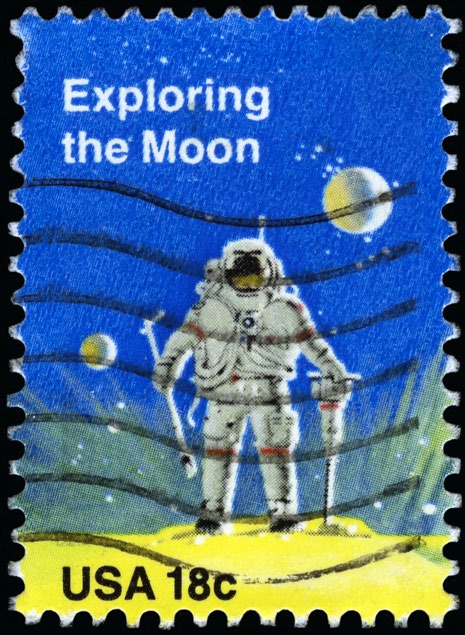
American postage stamp, circa 1981.
The space age dawned in 1957 when the Soviet Union launched the world’s first artificial satellite, Sputnik 1, setting off a furious rivalry between the superpowers for extra-terrestrial dominance. At the time, the president of the United Nations General Assembly happened to be New Zealand’s ambassador to the UN, Leslie Munro. Tall and charismatic, with bushy brows and a resonant voice, Munro was a former editor of the New Zealand Herald and a law lecturer at the University of Auckland. The New York Times would later describe him as “one of the most influential permanent delegates to the United Nations”.
Through Munro, New Zealand took a leadership position on space issues and in the decades since has “punched above its weight” in space governance, says Maria Pozza, a Christchurch-based space lawyer who studied this history in her doctoral research.
Amid the tensions of the Cold War, Munro urged the great powers to prevent the arms race from spilling into outer space. Mutual cooperation via the United Nations, he declared in 1958, was the only answer. Eventually, that approach was adopted in the 1967 Outer Space Treaty, which stated that space, including the moon, “is not subject to national appropriation”, and that space exploration should be undertaken “in the interests of all countries”. New Zealand was among the original signatories; the treaty has since been ratified by more than 100 countries.
It’s widely agreed that no country can claim any part of the moon for itself. But the question of who may use its resources is much more controversial. Gbenga Oduntan, an international commercial law researcher at the University of Kent in the United Kingdom, argues that the Outer Space Treaty prohibits resource extraction for private profit. Mining on the moon would be legal, Oduntan says, if the resources were used for research on behalf of all mankind. Appropriating those resources for commercial benefit is “a vastly new territory which we cannot allow countries, not to mention companies, to run along with on their own”.
For decades, successive US governments have taken a very different interpretation. In 1979, another UN treaty was negotiated: the Agreement Governing the Activities of States on the Moon and Other Celestial Bodies, known as the Moon Agreement. It declared that lunar resources were “common heritage” and committed signatories to set up an international oversight regime when resource extraction was about to become feasible. Only 18 countries signed on. The United States, China and Russia all refused, and New Zealand didn’t sign either, most likely because then- Prime Minister Robert Muldoon’s overriding foreign policy goal was to forge closer relations with the US.
New Zealand has always “punched above its weight” in space governance.
Forty years on, we have reached the point when resource extraction on the moon is about to become technologically feasible, and the US has been quick to assert its perceived rights. In 2015, Congress passed legislation unilaterally granting American companies the right to own and sell natural resources they mine from celestial bodies. In 2020, President Trump issued an executive order explicitly repudiating the 1979 Moon Agreement, proclaiming that “Americans should have the right to engage in commercial exploration, recovery, and use of resources in outer space . . . the United States does not view it as a global commons”.
One of the order’s architects was Scott Pace, who was handpicked by Trump to head the US National Space Council in 2017 (he has since returned to George Washington University where he is the director of the Space Policy Institute). In the 1970s, Pace was an early member of the L5 Society, a group of aspiring space colonists who hoped to build and live on an orbiting space station between Earth and the moon. He strongly disagrees with the notion that all countries, even those that are not yet capable of or interested in going, should get a say in what happens on the moon. “The American view is that rules on frontiers and shared domains are made by those who show up, not by those who stay behind,” Pace says.
Countries that are actually operating in space will be able to make agreements to avoid conflict, he says. “We tell the Russians and the Chinese and, increasingly, the Israelis and the Japanese and the Koreans, ‘Look, you don’t walk on our lunar footprints, and we don’t steal your rover’.”
His advice to everyone else? “Find a way to get in the game, and then you have a say.”
New Zealand is certainly in the game. In 2019, a government-commissioned report found that New Zealand’s space sector was worth $1.69 billion and, directly and indirectly, employs 12,000 people. While Rocket Lab is the dominant player, the sector includes more than 100 smaller companies involved in space manufacturing, research and development, support services and applications that use satellite data. So, once again, we have a chance to influence the global conversation about space. But what will we use our voice to say?
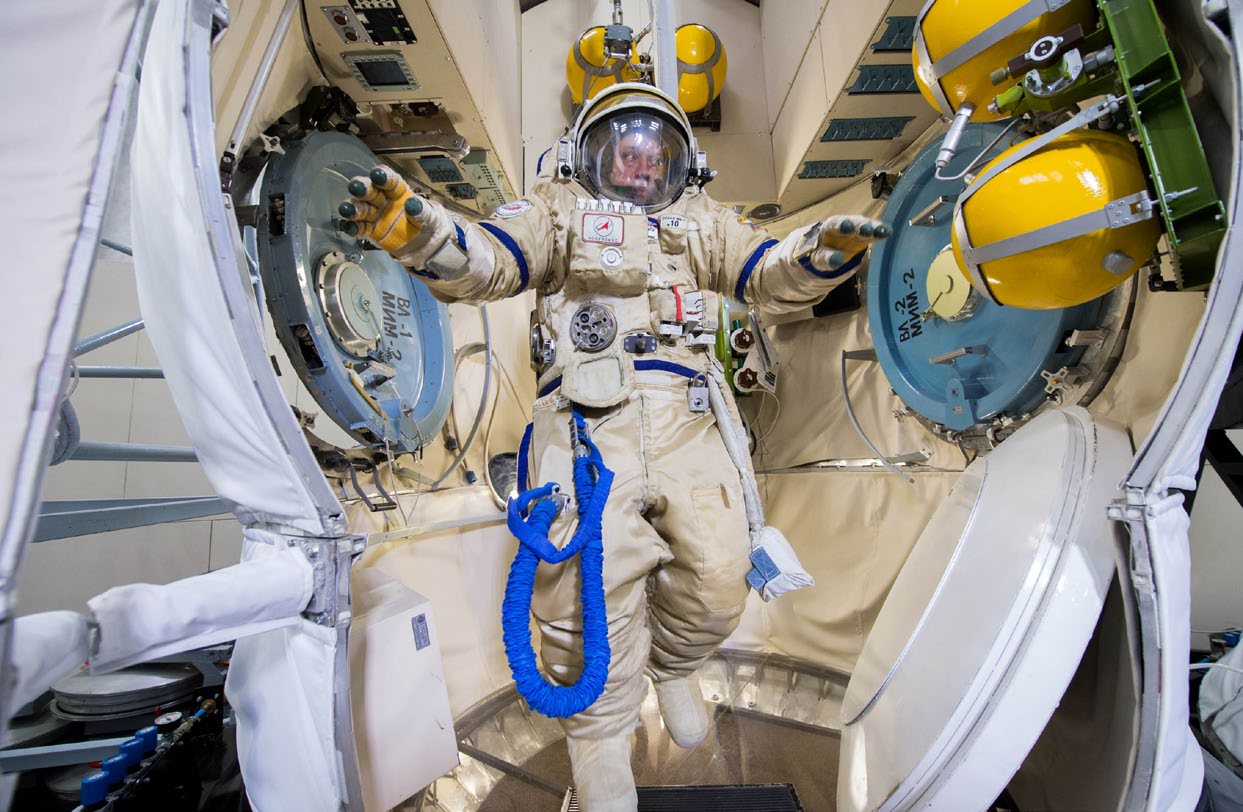
Russian cosmonaut Alexander Misurkin takes part in preflight tests on a Vykhod-2. Photo: Sipa USA.
In May, Minister for Economic and Regional Development Stuart Nash and Foreign Affairs Minister Nanaia Mahuta warned Cabinet about the prospect of a “scramble for resources” in space, starting with mining on the moon.
The fact that New Zealand was invited to be among the first partners in the Artemis programme, they told colleagues in a cabinet paper, showed that “we are now seen as a key player on space issues”.
Behind the scenes, however, there were concerns. New Zealand was not among the initial signatories when the accords were announced on 13 October 2020. Peter Crabtree, the head of New Zealand’s Space Agency, says this was mainly due to the election four days later. However, the Cabinet paper and other documents released under the Official Information Act reveal that officials from MFAT and MBIE had some reservations.
They had no issues with the parts about acting cooperatively, helping astronauts in trouble, preserving artefacts like Armstrong’s footprints, and sharing scientific data. But officials wanted more time to consider controversial elements such as the use of space resources and protocols for avoiding conflict.
For example, the accords propose that countries can set aside temporary “safety zones” around areas of the moon where they are operating. There are legitimate reasons for that, says Pozza: landing a rocket close to someone else’s building or spacecraft could cause significant damage. However, it also comes uncomfortably close to appropriating territory, which the Outer Space Treaty explicitly prohibits.
Some commentators view the Artemis Accords as a US ploy to solidify its position that companies should get property rights in space. “They create guidelines with the hope that eventually they will develop into customary law that will weaken the existing space law,” Stephan Hobe, the director of the Institute of Air Law, Space Law and Cyber Law at the University of Cologne, told a German newspaper. “That’s a really clever manoeuvre . . . We are of the opinion that all of the countries that participate [in the Artemis Accords] are complicit in hollowing out the Outer Space Treaty.”
Crabtree rejects that view and says officials ultimately concluded that the accords were consistent with international law. However, Nash and Mahuta told Cabinet that existing international law doesn’t protect the space environment from contamination or longterm damage. More regulation is urgently needed, as well as mechanisms for managing space resources sustainably, they said, adding: “We understand this is likely to be central to Maori interests in outer space.”
“It doesn’t take much to go to the ocean and see the moon pull trillions of litres of water from one side of the planet to the other . . . to see the massive impact it has on the world around us.”
There are some obvious reasons that New Zealand might want to side with the United States in this debate. Our relationship with the superpower is critical for our space sector, particularly Rocket Lab, which has numerous US government contracts. Joining the Artemis programme would also give our scientists access to scientific data and the chance to join well-funded collaborative research efforts. (So far, the accords have been signed by the US, New Zealand, Australia, Canada, Japan, Luxembourg, Italy, the United Kingdom, the United Arab Emirates, Ukraine, South Korea and Brazil.)
Crabtree points out that New Zealand is still free to disagree with the US and other signatories. “It’s not out of whack with New Zealand’s broader approach, in that we trust and believe in multilateral institutions.” But Pozza, the space lawyer, points out that the accords are deliberately not multilateral. “What we’ve got here are the rules of the road that have been tabled by one nation state” — the United States — “that other nation states have signed.”
Government officials remain hopeful that we’ll be able to nudge the rest of the world to be “tidy Kiwis” up in space. Despite US power, money and ambition, Crabtree insists “they are genuinely interested in our views”.
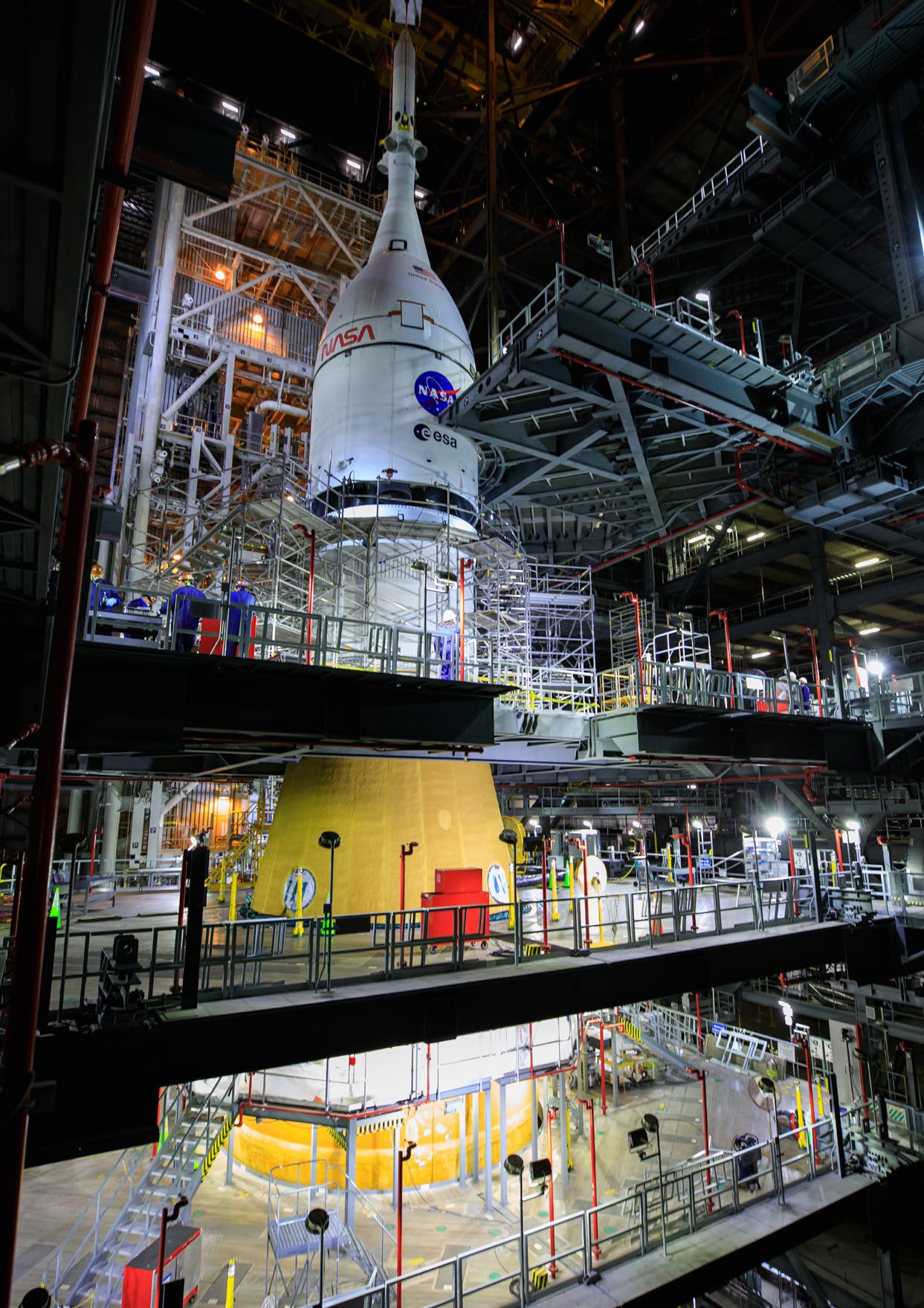
The Orion spacecraft for NASA’s Artemis I mission being lowered on top of the Space Launch System (SLS) rocket. Photo: EPA
In 2017, in a ground-breaking move that made headlines around the world, New Zealand’s Whanganui River was granted legal personhood. It was the beginning of the “rights of nature” movement, which aims to use legal measures to protect natural entities. Since then, legal rights have been granted to forests, mountains and more rivers, including India’s Ganges.
In February, a group of mainly Australian academics invoked precedents like these to issue a draft Declaration on the Rights of the Moon. “We the people of Earth”, the declaration begins, and goes on to assert the moon “possesses fundamental rights, which arise from its existence in the universe”.
Recent discoveries suggest the moon is a much more complex, dynamic and vulnerable place than previously thought, says one of the declaration’s authors, space archaeologist Alice Gorman from Flinders University in Adelaide. It has seismic activity, including moonquakes and fault lines. Individual water molecules have recently been identified on its sunlit surface. Ancient water ice was observed at both lunar poles in 2018, hiding in shadowy areas that haven’t seen sunlight in two billion years. “Surely that’s environmentally significant,” says Gorman.
Gorman is the vice-chair of an expert group for the Moon Village Association, an NGO that hopes to establish a permanent human presence on the moon. “I’m as motivated by the excitement of space science as the most hardcore space nut,” she says. But she has also spent many years on mining sites on Earth, working as a heritage consultant for Aboriginal traditional-land owners, and says it’s inevitable that human activities on the moon will have some kind of environmental impact. “It’s not just, let’s dig a hole on the moon.”
It’s unlikely that mining could change the lunar orbit or affect the tides here on Earth. But lunar dust is a real concern. Sticky, abrasive and full of sharp fragments of obsidian, it is extremely hazardous to human health; the grains are so sharp they can slice holes in an astronaut’s lungs and damage their DNA. Some research suggests that too many rockets landing and taking off could lift significant quantities of dust into the moon’s exosphere — the very thin layer of gases surrounding it. “There’s the potential to create a little dust cloud around the moon,” says Gorman, “and we don’t yet know enough about how the moon operates in order to properly assess those impacts.” She suggests that in the absence of any meaningful international regulations, the Declaration on the Rights of the Moon could be a statement to which companies and countries operating on the moon could be held accountable.
Scott Pace, the American space lawyer, is deeply sceptical, calling the declaration “politically meaningless”. The Whanganui River’s legal rights, he points out, were granted by the sovereign government of New Zealand. There is no power that could legally grant such rights to the moon. Efforts to have the moon declared a national park or a World Heritage Area have failed for the same reason.
Still, says Erin O’Donnell, an expert on the rights of nature movement from the University of Melbourne, the declaration is a valuable prompt to think about the moon “as something other than a piece of territory to be fought over by nation states and corporate investors”. Where rights of nature movements have had the most impact, she says — singling out the Whanganui River as a rare success story — is in “resetting the human relationship with nature”, often by elevating indigenous worldviews.
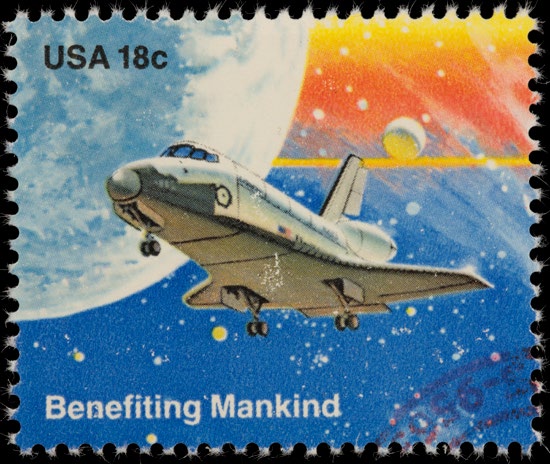
American postage stamp, circa 1981.
For Māori, the moon is a deity. Its story is recorded in songs, whakataukī and genealogies. Traditionally, Marama’s phases guided not just fishing and planting but marked the progression of time itself, says astronomer and indigenous studies academic Rangi Matamua. “The moon is actually a central cog in this very detailed and elaborate Māori division of time.”
More than 500 maramataka, or Māori lunar calendars, have been recorded across New Zealand, Matamua says. Each one is specific to the natural rhythms of a particular place — recording the arrival and departure of migrating birds, the movement of whitebait, the best time to hunt eels.
“There isn’t a culture or a people around the world that doesn’t have a traditional association to the moon,” he says. The Artemis programme itself is named after the Ancient Greek goddess of the moon, an arrow-shooting huntress that the poet Homer called “She of the Wild”.
Human interest in the moon transcends epochs and borders. People have trouble sleeping during the full moon, and there’s a longstanding idea that people act crazier or hurt themselves more on those nights. (Some scientists say it might just be a hangover from the fact that before artificial light, people stayed up later and partied on bright full-moon nights, therefore doing riskier things — but one study found a link between the lunar cycle and the manic-depressive swings of bipolar patients.)
Lunar eclipses, too, inspire awe and fascination. And the tides shape the daily lives of everyone who lives near the coast, says Matamua. “It doesn’t take too much to go down to the ocean, and see the moon pull trillions of litres of water from one side of the planet to the other, and then 12 hours later, pull it all the other way, to see the massive impact that it has on the world around us.”
The moon also influences the life cycles and behaviour of some animals. The European nightjar, which migrates from northern Europe to sub-Saharan Africa, times its travel to the nights following the full moon, when the increased light enables it to catch more insects.
Some fish use the full or new moon to coordinate spawning, or to take advantage of the higher tides to carry their eggs into estuaries. New Zealand researchers recently discovered that the phases of the moon influence how fast baby reef fish grow, probably because moonlight makes it easier for predators to find prey near the sea’s surface.
The moon is so much more than a resource, Matamua says. Its connection to Earth is physical, biological and spiritual. “So who speaks on behalf of the moon? Who speaks for the rights of that celestial body and gives it a voice?”
Outer space is often referred to as a ‘frontier’, or ‘the Wild West’. But in a 2020 white paper, a group of US experts, including some from NASA, argued that this mentality risks recreating in space the structures of colonialism: a system that seeks to dominate landscape and environment, and that prioritises profit for a few over the welfare of the many. The choices that space powers make in the next decade, they wrote, “will dictate the future of humanity’s presence on other worlds, with the potential to impact the environments we interact with on timescales longer than the human species has existed . . . The time is now to engage in these difficult conversations and disrupt colonial practices within our field so that they are not carried to other worlds.”
Matamua says a well-known whakataukī offers a warning for what could happen if we get it all wrong: “Kia mahara ki te hē o Rona. Don’t forget the mistake of Rona.” Rona — a daughter of Tangaroa and the controller of the tides — was going to get water in the middle of the night, Matamua says, her way lit by Marama the shining moon. Marama went behind a cloud, and in the darkness, Rona tripped and hurt herself.
Frustrated, she looked up and cursed the moon, who instantly took his revenge. He snatched Rona up into the sky along with the gourds she carried and a ngaio tree she grabbed in an attempt to stay earthbound.
The whakataukī is a reminder that there are consequences for your words, Matamua says. In the context of the moon, it also could mean that “there are consequences for our actions”. It’s a spiritual, mythological way of seeing the issue, Matamua acknowledges — ways of thinking that aren’t often present in the worlds of space exploration and international law. But, as Matamua says, it contains a real lesson. “We need to ensure that the moon doesn’t take revenge upon us for disrespecting it.”
Kate Evans is a freelance journalist based in Raglan who is writing a book about feijoas.
This story appeared in the December 2021 issue of North & South.


